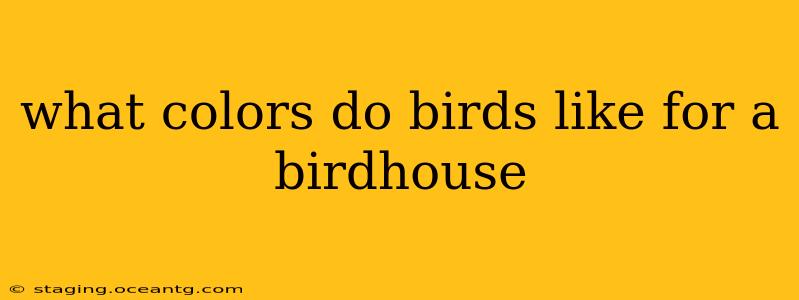What Colors Do Birds Like for a Birdhouse? The Surprising Truth About Avian Aesthetics
Choosing the right color for your birdhouse might seem like a minor detail, but it could actually influence whether birds choose to make it their home. While birds don't see colors exactly as humans do, their color preferences can subtly impact their choices. This article delves into the fascinating world of avian vision and explores what colors attract birds to birdhouses, dispelling some common myths along the way.
Do Birds Even Care About the Color of a Birdhouse?
The short answer is: not as much as you might think. While some studies suggest slight preferences, the color of the birdhouse is far down the list of priorities for a bird selecting a nesting site. Far more important are factors like:
- Location: A safe, sheltered location away from predators and with easy access to food and water is paramount.
- Size and design: The entrance hole size needs to be appropriate for the bird species, and the overall structure must offer sufficient protection from the elements.
- Materials: Natural materials that blend with the surroundings are generally preferred.
Therefore, while color plays a minor role, it's overshadowed by these more crucial aspects of birdhouse construction.
What Colors Are Least Appealing to Birds?
Instead of focusing on attracting birds with color, it's more beneficial to consider colors that might deter them. Bright, unnatural colors can be alarming to birds, making them less likely to approach. Avoid:
- Bright reds and oranges: These are often associated with danger or warning signals in the natural world.
- Highly reflective colors: Shiny, metallic colors can scare birds away.
- Very dark colors: Dark colors absorb more heat, potentially making the birdhouse uncomfortably warm for nesting.
What Colors Might Birds Find Appealing?
While there's no definitive "favorite" color, subtle, natural tones often work best. Birds generally prefer colors that blend in with their surroundings:
- Earthy tones: Browns, greens, and grays are excellent choices as they mimic natural tree bark and foliage.
- Subdued colors: Muted shades of blues or other colors can also be effective, especially if they complement the surrounding environment.
Remember, a camouflage approach is key. The goal is not to attract attention, but to provide a safe and inconspicuous nesting site.
Is it better to paint a birdhouse or leave it natural?
Leaving a birdhouse unpainted, especially if it's made from natural wood, is often the best option. The natural wood color and texture provide good camouflage and are generally preferred by birds. However, painting can be necessary to protect the wood from the elements and extend its lifespan. If you must paint, stick to the muted, natural tones mentioned above.
Do different bird species have different color preferences?
There's limited research specifically detailing color preferences across various bird species. More research is needed to determine if specific species show a stronger preference for particular colors. However, generally speaking, the principles of camouflage and avoiding bright, unnatural colors apply across the board.
In conclusion, while the color of a birdhouse isn't the most crucial factor for attracting birds, choosing muted, natural colors that blend into the surrounding environment is a good practice. Prioritize location, size, design, and materials to maximize your chances of attracting feathered friends to your birdhouse.
